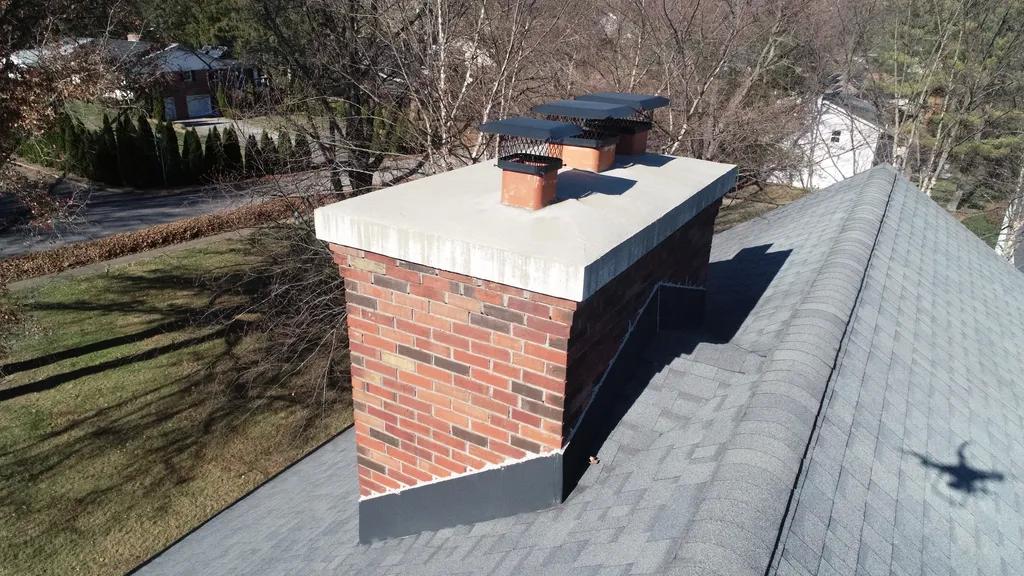Water intrusion from a chimney can lead to serious structural damage and potentially cause your basement to flood. Understanding the causes and warning signs of this issue is essential for protecting your home and preventing costly repairs. In this article, we will explore the common causes of water intrusion from chimneys and provide valuable information on how to identify and address this problem effectively.
Table of Contents
- Identifying the Causes of Water Intrusion from Chimney
- Effects of Basement Flooding Due to Chimney Water Intrusion
- Preventing Water Intrusion from Chimney into the Basement
- Professional Solutions for Addressing Chimney-Related Basement Flooding
- Q&A
- Closing Remarks

Identifying the Causes of Water Intrusion from Chimney
Water intrusion from a chimney can be a frustrating and potentially damaging issue for homeowners. Understanding the causes of this problem is crucial in order to effectively address and prevent it. One common cause of water intrusion from a chimney is a damaged or improperly installed chimney cap. This can allow water to enter the chimney flue and seep into the basement, leading to potential flooding.
Another possible cause of water intrusion from a chimney is deteriorated chimney flashing. Chimney flashing is the sheet metal or other material that seals the joint between the chimney and the roof. If this flashing becomes damaged or begins to deteriorate, water can easily enter the home through the chimney. It is important to inspect and maintain the chimney flashing regularly to prevent water intrusion issues.

Effects of Basement Flooding Due to Chimney Water Intrusion
Basement flooding can be a nightmare for homeowners, especially when it’s caused by water intrusion from the chimney. When water seeps in through the chimney, it can lead to serious water damage in the basement, causing mold growth, structural damage, and health hazards. Understanding the is crucial for taking appropriate measures to prevent and address the issue.
Some of the common effects of basement flooding caused by chimney water intrusion include:
- Water Damage: The water can damage walls, floors, and belongings in the basement.
- Mold Growth: Excess moisture can create an ideal environment for mold to grow, leading to health problems.
- Structural Damage: Continuous water intrusion can weaken the foundation and structure of the house.

Preventing Water Intrusion from Chimney into the Basement
Water intrusion from the chimney into the basement can be a frustrating and costly issue for homeowners. If left unresolved, it can lead to dampness, mold growth, and structural damage. Understanding the causes and potential solutions can help prevent basement flooding and protect your home.
**Causes of Water Intrusion from Chimney:**
- Missing or damaged chimney cap
- Cracked chimney crown
- Failed chimney flashing
**Solutions to Prevent Water Intrusion:**
- Install a chimney cap
- Repair or replace the chimney crown
- Ensure proper chimney flashing installation
Professional Solutions for Addressing Chimney-Related Basement Flooding
When it comes to basement flooding, one often overlooked culprit is water intrusion from the chimney. This type of flooding can be caused by a variety of factors, such as a damaged chimney cap, cracked chimney crown, or deteriorated mortar joints. If you’re experiencing basement flooding and suspect that your chimney may be the source of the problem, it’s crucial to seek out professional solutions to address the issue effectively.
One of the most common is to repair any damage to the chimney structure. This may involve replacing the chimney cap, repairing the chimney crown, or repointing mortar joints. In addition to structural repairs, waterproofing the chimney can help prevent water intrusion and protect your basement from future flooding. By taking proactive measures to address chimney issues, you can effectively mitigate the risk of basement flooding and protect your home from water damage.
Q&A
Q: What are common signs of water intrusion from a chimney into a basement?
A: Some common signs include dampness or water stains on basement walls or ceilings, a musty smell, and puddles or standing water on the basement floor.
Q: How does water intrusion from a chimney occur?
A: Water intrusion from a chimney can occur due to damaged flashing or chimney cap, deteriorated mortar joints, or a faulty chimney crown, allowing water to seep into the chimney and eventually into the basement.
Q: What are the potential consequences of water intrusion from a chimney into a basement?
A: Water intrusion from a chimney can lead to mold and mildew growth, structural damage to the home, and potential health hazards for residents due to poor indoor air quality.
Q: How can homeowners prevent water intrusion from a chimney into their basement?
A: Homeowners can prevent water intrusion by regularly inspecting and maintaining their chimney, ensuring proper flashing and chimney caps are in place, sealing any cracks or gaps, and keeping gutters and downspouts clean to prevent water from pooling near the chimney.
Q: When should homeowners seek professional help for water intrusion from a chimney?
A: Homeowners should seek professional help if they notice significant water intrusion, extensive damage, or if they are unsure of the source of the water intrusion. A qualified chimney specialist can assess the situation and recommend appropriate repairs or solutions.
Closing Remarks
In conclusion, understanding how water intrusion from the chimney can lead to a flooded basement is crucial in order to properly address and prevent such issues. By identifying potential causes such as damaged flashing, deteriorated masonry, or clogged gutters, homeowners can take proactive measures to protect their property from water damage. Regular inspections and maintenance of the chimney and surrounding areas are recommended to ensure the structural integrity of the home and prevent costly repairs in the future. Stay vigilant and address any signs of water intrusion promptly to safeguard your basement and maintain a dry and secure living environment. Thank you for reading.


